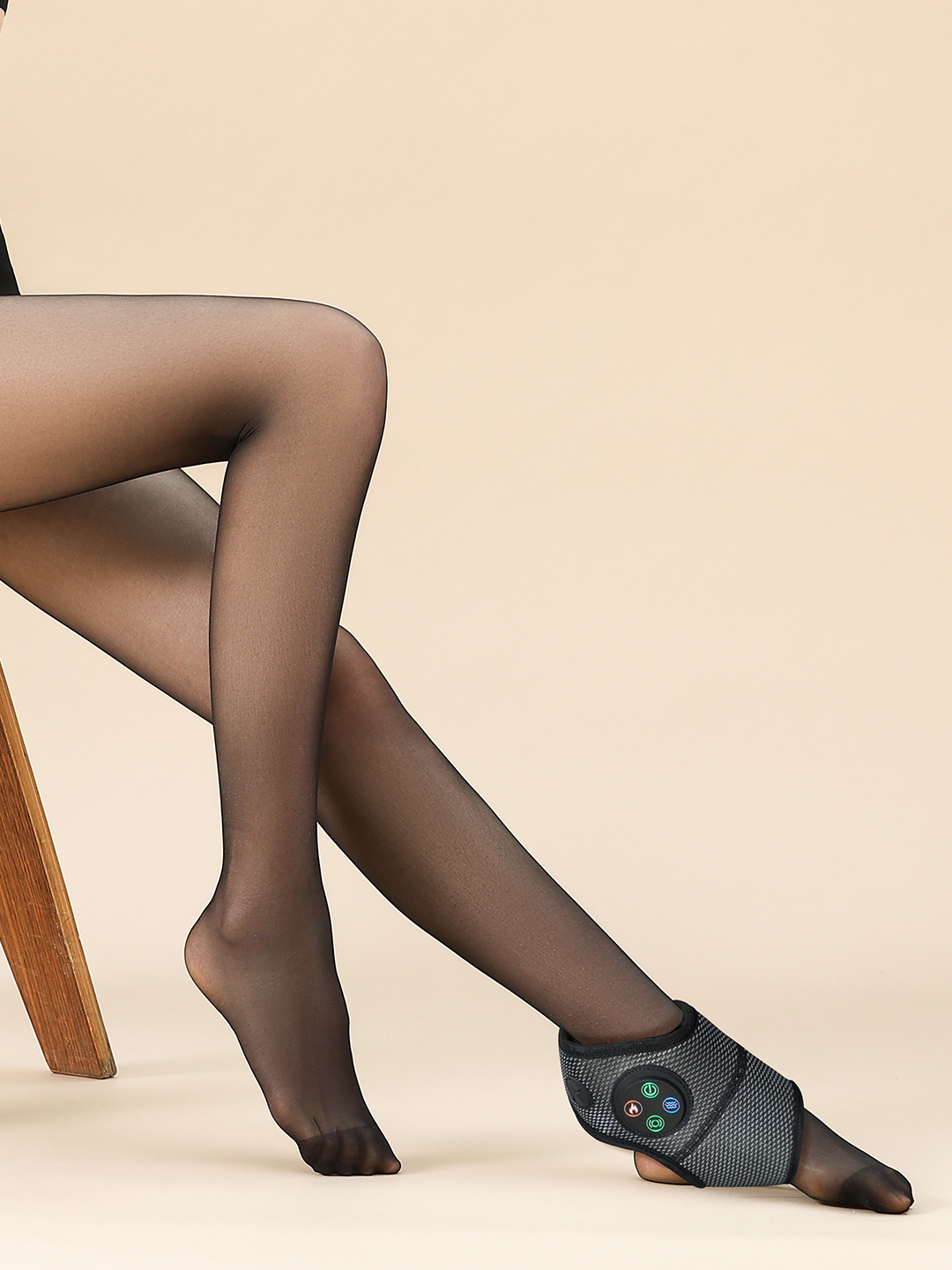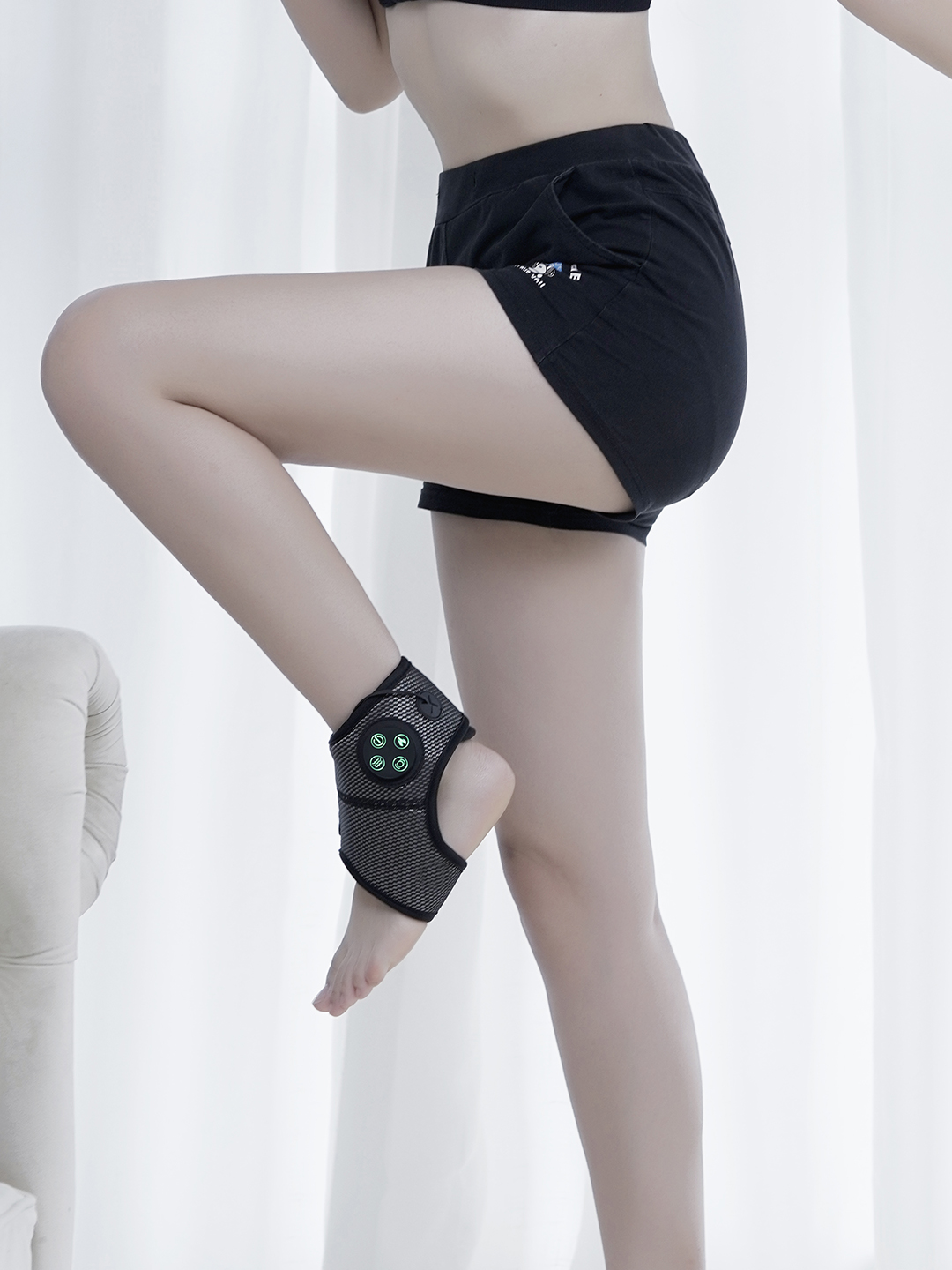Is It Safe to Use Foot Massagers for Diabetic Patients?
- By Grace
- Updated on
As a seasoned Health Product Review Expert, I’ve seen my share of health gadgets making grand promises. When it comes to something as delicate as diabetic foot care, the question isn't just about comfort, but genuine safety. Many middle-aged and elderly individuals, rightly concerned about their circulation and nerve health, wonder: can a simple foot massager really help, or could it do more harm than good? It’s a valid concern, especially since ordinary devices might pose risks due to improper temperature or pressure. But can specialized foot massagers truly guarantee 100% safety? Let's unravel this puzzle.
Why Temperature Control is Crucial for Diabetic Foot Massagers?
Have you ever put your feet in what felt like lukewarm water, only to realize later it was surprisingly hot? For diabetic patients, this scenario isn't just uncomfortable; it’s a serious health risk. Due to decreased nerve sensitivity, often a complication of diabetes, temperatures over 40℃ (that's about 104°F) can cause significant low-temperature scalding without the patient even realizing it. Imagine the damage that could occur if a device doesn't have precise heat regulation!
This is where specialized foot massagers truly shine. They aren't just about making your feet feel good; they're engineered with safety in mind. Professional models often feature precise temperature control, usually with three distinct levels, ensuring you can choose a warmth that’s soothing without being risky. They also come equipped with essential overheat protection and an automatic shutdown function after about 15 minutes. This isn’t just a fancy feature; it’s a fundamental safeguard to dramatically reduce the risk of accidental burns and discomfort. It's truly a game-changer for daily foot care.
- Precise Temperature Control: Multiple heat settings (e.g., three levels) to accommodate varying sensitivities.
- Overheat Protection: Built-in sensors to prevent the device from reaching unsafe temperatures.
- Automatic Shutdown: A timer that turns off the device after a set period, preventing prolonged exposure.
Why Diabetic-Specific Foot Massagers Adopt Air Pressure Regulation
You might think any massage is good massage, right? Not so fast, especially when dealing with sensitive diabetic feet. The mechanical squeezing of ordinary massagers, while perhaps relaxing for some, can accidentally hurt ulcerated areas or cause secondary injuries due to excessive localized pressure. It’s like trying to untangle a knot with a sledgehammer—effective for some things, but not for delicate work!
This is why **diabetic-specific foot massagers** are designed with a smarter approach: air pressure regulation technology. Instead of brute force, these devices use inflatable airbags that gently and dynamically fit different ankle and foot shapes. This innovative method avoids concentrated pressure points, ensuring a uniform and adaptable massage that won't exacerbate existing issues or create new ones. It’s a crucial design choice that prioritizes delicate care over aggressive manipulation, making them far superior for sensitive users. Who knew air could be so comforting?
From my experience, watching user feedback, this air compression method is far more beneficial than traditional roller or kneading massages for this particular patient group. It provides a comforting squeeze that boosts circulation without putting undue stress on vulnerable areas. Actually, it feels a bit like a gentle, warm hug for your feet. Truly impressive engineering.

Choosing Safe Materials for Diabetic Foot Massagers
Nobody wants a health product that becomes a petri dish, do they? If foot massagers are made of inferior materials, they’re prone to dirt accumulation and bacterial growth. For anyone, this is unpleasant, but for diabetic patients, who are more susceptible to infections due to compromised immune systems and slower healing, it’s a serious concern. A small cut or blister could quickly escalate if exposed to unsanitary surfaces.
That’s why the material choice is paramount. When I review products, I always look for high-quality, breathable, and moisture-permeable materials. For instance, imported diving fabric (yes, the same stuff used in wetsuits!) is an excellent choice. Its properties help reduce the risk of infection when the foot comes into contact with the device by allowing air to circulate and moisture to escape. This makes it far more suitable for the sensitive diabetic patient group, ensuring a cleaner, safer, and more hygienic experience. It’s a subtle detail, but one that makes a world of difference for peace of mind and foot health.
Multi-functional Foot and Ankle Massagers
When it comes to daily care, simplicity and effectiveness often go hand-in-hand. Many users, including myself, advocate for multi-functional foot and ankle massagers, such as the Klcosy model. These devices aren't just one-trick ponies; they offer a comprehensive massage mode - such as gentle vibration combined with soothing air compression and heat therapy - and also feature multiple pressure and mode adjustment settings, being safe and easy to use. This adaptability is key to meeting diverse care needs while minimizing the risks associated with single-function designs that might be too intense or too limited.
Imagine having a device that can cater to your specific comfort level on any given day, whether you need a light, circulating massage or something a bit more focused on tired ankles. Their ease of use is another major plus for our target audience, who may appreciate straightforward controls and intuitive design. Why settle for less when you can have comprehensive, customizable care that targets various aspects of foot and ankle discomfort? It's about optimizing your care, not just relieving a symptom.

Navigating Risks and Limitations: When to Seek Medical Guidance
While the advancements in specialized foot massagers are truly exciting, it's vital to inject a dose of reality. As a health product expert, I always emphasize that these devices, no matter how sophisticated, serve as an auxiliary means for daily care. They are *not* a replacement for professional medical treatment. If you’re facing serious diabetic foot complications, such as active ulcers, severe neuropathy, or acute infections, a massager could be detrimental.
Some users, and frankly, every medical professional worth their salt, strongly suggest that diabetic patients consult a doctor before using any dedicated foot massager. This step is non-negotiable. Your physician can confirm whether your specific condition is suitable for its use, giving you a personalized green light or a cautious red one. It's about informed decisions, not just impulse purchases. Always prioritize medical advice over product marketing, no matter how compelling. This isn't just good advice; it's essential for your health.
FAQ about Foot Massagers and Diabetes Answered
Is foot massage good for diabetics?
For many diabetics, foot massage can indeed be beneficial, but with significant caveats. It can potentially improve blood circulation, relieve muscle tension, and provide comfort. However, the crucial factor is the type of massager and the condition of the patient's feet. Gentle, well-regulated massage from a specialized device designed for diabetics, with careful temperature and pressure control, is key. Aggressive or hot massages are a definite no-go.
Can diabetics use foot massagers?
Yes, diabetics can use foot massagers, but it's not a blanket approval for all devices or all patients. The safest option is a specialized foot massager for diabetics that features precise temperature control, adaptive air pressure technology, and hygienic materials. It is absolutely essential to consult your doctor or podiatrist beforehand, especially if you have existing complications like neuropathy, ulcers, or active infections. They can assess your specific situation and advise accordingly.
Who should not use a foot massager?
Certain individuals, particularly those with diabetes, should absolutely avoid using a foot massager or do so only under strict medical supervision. This includes anyone with:
- Active foot ulcers, open wounds, or infections on the feet.
- Severe peripheral neuropathy with complete loss of sensation, as they might not detect harmful pressure or heat.
- Deep vein thrombosis (DVT) or severe varicose veins, as massage could dislodge clots.
- Certain heart conditions or pacemakers, without medical clearance.
- Acute inflammation or swelling in the feet, which could be worsened by massage.
When in doubt, always, always consult your healthcare provider. Your health is not worth a gamble.
This reply is generated based on currently verifiable public information. It is recommended to cross-check key content with authoritative sources.




